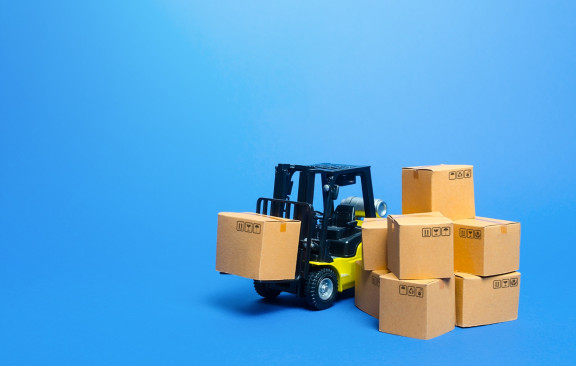Importing low-cost goods from other countries and then reselling them for a profit can really turn your life around. At first, the process may seem complicated and risky, but once you get to know the basics, you’ll see it’s actually easy.
We’ve come up with this handy guide filled with tips and secrets on importing wholesale to help you launch your import business and make the profits you’ve always dreamed of.
Why Import Wholesale?
When asked why he planned to climb Mount Everest, George Mallory is said to have replied, “Because it’s there.” Like climbing the highest mountain in the world, importing goods from overseas seems daunting, but it can be done.
Anyone can go into this business. You can easily learn how to find suppliers and manufacturers, import products from China and other countries, and sell products for a good profit. You can even do it from the comfort of your own home!
So, why import wholesale? Because the possibility is there, and because you can.
What Should You Import?
Items worth importing are usually in high demand. There are many types of products you can import, but it's essential that you identify a product that is hard to find in your home country, if it’s even available.
You can also import a product that is available locally and extremely popular—source it cheaply from good suppliers abroad for selling on eBay and other shopping platforms at a lower price than elsewhere.
To find a product in high demand, the golden rule is to always increase your awareness of emerging trends and niche markets.
The operative phrases here are “emerging trends” and “niche markets.” There is a common misconception that the only truly popular products are those listed on eBay’s top 10 searches, such as flat-screen TVs, smartphones and designer sneakers and handbags. Popular does not have to mean that millions of people are searching for the item every minute of every day.
Here’s a secret: You don’t need to import a highly popular item to make money online—you just need a moderately popular item. Why? Because such an item has the potential for you to sell up to 100 units a day, or however many you need to make a profit.
Take, for instance, the hobby of stamp collecting. Thousands of people around the world are into it and millions are spent on it each year, even now when the use of stamps has been dwindling.
But can you find anything related to stamps on eBay’s top 10 searches? We suppose not.
This is why you should focus on niche markets and emerging trends instead. So, how do you find these? By paying attention to what’s being talked or written about around you.
Take a look at magazine topics, newspaper headlines, new product releases, the latest in street fashion, and even quirky inventions. These all provide useful information about emerging market trends and popular niches, and knowing those will help you decide what to import in bulk.
To help you get a better idea of what to import, here are some of the top product categories when importing wholesale.
- Home décor
- Fashion accessories
- Key chains
- Gift boxes and greeting cards
- Men's watches
- Hair accessories
- Mobile phones
- Pet supplies
Again, search for products in high demand that are relevant to your chosen niche market.
Tips for Beginners: Where to Start and What to Avoid

Before we tackle the steps to importing wholesale, here are two important tips we’d like to share with you.
First, consider shipping costs, because the actual cost of an item includes the freight as well. This is why it’s advisable to choose products that are small and light when you are just starting your business.
An advertised item may have a wholesale price tag of $1 in China, but if freight costs $10 for each item because of its size and weight, then the actual cost per item is $11. Paying more for freight than the actual item may be impractical and you’ll have to start from scratch to recover.
Second, and we cannot stress this enough, is to avoid designer goods. Years of industry experience have taught us that almost without exception, all products advertised as “designer” that are made in China are counterfeits.
Designers, on the whole, have their creations made exclusively in France or Italy to ensure exceptional quality. Any leftover products are often destroyed rather than sold wholesale.
Additionally, if you get caught selling fake designer goods, you can face heavy penalties, not to mention jail sentences. So, we strongly advise against importing designer goods, unless you happen to have contacts in the industry.
It’s safer and better to make money through selling cheap, unbranded Bluetooth headsets where you can make up to $40 off a pair and shift 200 a week.
5 Easy Steps to Importing Wholesale
1. Do Your Research
Before choosing products to sell, study emerging trends and identify niches for market research first. You must be absolutely certain that the goods you import from China will sell; otherwise, you will lose money.
2. Find Good Suppliers
Be careful of fraudulent sites when looking for Chinese wholesale suppliers. Take all the time you need to authenticate and verify the integrity of suppliers you find online. Look for feedback and reviews, if possible.
SaleHoo members get instant access to more than 8,000 of the world’s most trusted wholesale suppliers, so if you haven’t signed up, now would be a great time to do so.
3. Contact the Supplier
Get the specifics and arrange for a small sample order so you can test and validate the product. Go over the samples and do some quality inspections. Have a few people try the product out themselves.
If the market shows a favorable response when you list a few for sale, you can feel safe increasing order quantities.
4. Place an Order
Once your bulk order has been confirmed, organize freight and make the payment for both. Make sure you talk to a certified customs broker to ensure you fill in the correct forms and all import requirements are addressed.
5. Receive the Goods
Pay the necessary customs fee, get your items online (consider private-label branding using your custom logo) and start making a profit!
Of these five steps to importing wholesale, the most important are steps 1 and 2. Doing research takes up a lot of time and can be frustrating, but without the proper knowledge, you won’t be able to make money importing at all. You even risk being scammed or going into debt.
You may need to spend a couple of weeks researching the market and finding good suppliers, but trust us, the time and effort will be well worth it.
Importing from China Wholesale

There are thousands of products you can purchase off the shelf from China. It’s considered the factory of the world, where you can find every product you can think of.
The key is to choose one that can make you a good profit. Here are some great tips on getting wholesale imports from China.
Know your niche, and know it well. Doing so will let you create effective marketing, test the product quality properly, price your product and engage with your target market.
If you’re starting small, start small. It’s all right to have big dreams, but be realistic when you’re starting out small. Pick a niche that doesn’t compete with the big players such as Home Depot, Walmart and Amazon. The most viable niches are those the major retailers don’t sell in.
Choose a low-risk product. A low-risk product is one that is unlikely to cause injury. If your product ends up harming someone, you will most likely be sued, so be on the safe side to avoid any product liability lawsuits down the line.
Develop close working relationships with good suppliers. In the import business, this is your best risk management strategy.
Educate yourself on Chinese business culture. In China, hierarchical structures are important, so determine how this works into the import process with your contact or supplier. Also, make sure you verify what’s written on the invoice to see if it contains what both parties have agreed to.
Choose verified Chinese suppliers with a good reputation. You, as importer, will be solely and entirely responsible for what you import, and any irregularities in terms of compliance with regulations and certifications can have serious legal ramifications. This is why it’s important to choose a reputable supplier to do business with.
Do your homework—research the regulations you’ll need to comply with. You need to do this with every country you import from, especially in the case of China. This is because many Chinese suppliers do not manufacture products that comply with regulations in the first place. Check with customs to determine exactly which regulations the product will need to comply with as well as the duties and taxes you need to pay.
Pay attention to detail. Make sure the sales agreement you draw up contains all the details in terms of product specifications, conditions of return and compensation and other important information.
How to Buy Wholesale from SaleHoo
SaleHoo is a wholesale directory listing service where you can find items to sell on eBay, Amazon, and other online shopping platforms. The SaleHoo directory has thousands of suppliers who sell products at below-market prices. Here’s how to find dropshippers and buy wholesale from SaleHoo after you have signed up for the service.
1. Log in and start your search.
Once you have logged into SaleHoo, you'll be welcomed by the supplier directory page. You can search for suppliers in two ways. The first is by typing in a product, brand, or company name in the search bar located at the top of the page. The second is by scrolling down and clicking on a category, then browsing the suppliers in that category. SaleHoo's directory has 21 product categories:
- Adult Products
- Antiques & Collectables
- Baby Gear
- Books & Magazines
- Business & Industrial
- Cameras & Photo
- Car and Auto Parts
- Cell Phones & PDAs
- Clothing & Fashion
- Computers & Software
- Consumer Electronics
- DVDs & Movies
- Food & Beverages
- Health & Beauty
- Home & Garden
- Jewelry & Watches
- Shoes & Fashion
- Sporting Goods & Entertainment
- Toys & Games
- Travel & Outdoors
- Video Gaming
2. Filter your search.
SaleHoo’s supplier list includes drop shippers, liquidators, wholesalers, and manufacturers. To refine the search results to show only suppliers that drop ship or sell wholesale, direct your attention to the left panel. Click on Supplier Type then tick the box labeled “Dropshippers” or “Wholesalers” from the drop-down menu.
If you’re selling in a particular region, it’s advisable to also filter suppliers according to where they ship. This way, your customers are sure to receive the item in the fastest time and at the lowest shipping rate. So if you are selling items in the United States, click on Select Locations in the search filter panel then tick the box labeled “North America.” This will make the search results show only those suppliers that drop ship or sell wholesale within the United States.
3. Choose a supplier.
Click on the company name in the search results to know more about a supplier. The company page will show the supplier’s physical address, the type of supplier (Dropshippers, Wholesalers, Manufacturers, a combination of these), a button you can click to contact the supplier (with email templates you can use), a link to the supplier’s website, and details about product range and quality.
The page will give you an overview of the company, the supplier’s contact information including its phone number, website safety information, and some photos so you can see the types of items the supplier sells. The supplier page also contains information about the minimum order quantity (MOQ), whether a resellers’ or Tax ID is required or not to buy from the company, the number of years in business, as well as the number of years on the Salehoo directory. You can also read about the company and product information by clicking the tabs beside the Overview tab.
4. Check the supplier’s website and locate items for buying wholesale.
Go to the supplier’s website by either clicking the “Visit Website” button below the company name or the website link located on the left panel that contains the company’s contact details. From the website you can look for the item, you’re interested in buying wholesale. The product page should show the product description, unit price, shipping information, and other purchase details.
Once you have found the product/s you are interested in, contact the supplier and request a quote. Verify the MOQ and ask about payment terms. At this point, it’s important to seek out other suppliers and request quotes from them so you can determine which one can bring you good business. List the pros and cons of working with potential suppliers, taking into consideration the unit price of the item, delivery rates, and delivery time.
5. Begin negotiating with the supplier.
Negotiate with the supplier--depending on the quantity of your order, the supplier may agree to bring the unit price down. Do this for all of the suppliers you have contacted. When choosing which supplier to buy wholesale from, consider not only the payment terms, MOQ, and unit price, but also whether you feel you will have a good working relationship with that company.
You may need to try out a few companies at the beginning to see which one meets your expectations. Once you have found a good supplier, simply buy, sell, and repeat!
How to Buy Wholesale from Alibaba
Alibaba is the world’s largest marketplace for importers looking to purchase goods from suppliers overseas. Here’s how to buy wholesale from Alibaba.
1. Start Your Search
You can search for items using the product categories or simply type in the particular product you want. From the search bar dropdown menu, you can also choose to select “Suppliers” rather than “Products” to see a list of suppliers specializing in that product. Remember to verify suppliers to protect yourself from scams.
2. Check the Details
Check the unit price and minimum order quantity (MOQ). The MOQ is often negotiable, so if you need a small sample order, let the supplier know.
3. Check the Payment Options
Some of the most common payment options are bank transfer, letter of credit, PayPal, escrow, and wire transfer via Western Union. (Tip: The safest options are escrow and PayPal.)
4. Contact Suppliers
Request a quote. Verify the MOQ and ask about unit price, pricing for samples, production time and payment terms. List the pros and cons of working with each supplier.
5. Begin Negotiations and Weigh Your Options
Consider not only the price, payment terms and minimum order quantities, but also whether you feel you will have a good working relationship with the supplier. Keep in mind that communication and mutual trust are important!
Tips on Importing from China to the US
- Register for a business tax number. You will need this to import to the United States.
- If you are loath to handle customs matters yourself, consider hiring an experienced customs broker for your first import.
- Make sure invoices are clear and complete so your goods can be cleared by customs quicker.
Tips on Importing from China to the UK
- Goods imported into the UK require a completed C88 form, an attached copy of the invoice from the supplier, any necessary licenses and proper classification.
- Check how your product is classified under the UK Trade Tariff to determine the amount of duty payable. You also need to find the right commodity code for your goods.
- Goods such as complex food products are classified according to the product’s composite ingredients, and a number of different duties may apply. For example, there are sugar levies on processed food containing sugar.
Tips on Importing from China to Australia
- Avoid food and perishables. Importing goods that can be spoiled in transit is expensive because you will need specialized containers. Australia also has very strict regulations when it comes to importing produce and other perishables.
- Know and understand government regulations. You may need a special permit to import certain types of goods. Check out the applicable regulations, taxes and duties via the Customs Information Centre.
- Do your research about the cost of freighting items to Australia. Tip: Shipping costs can be negotiated with the wholesaler, just as you can negotiate the cost of wholesale goods.
Tips on Importing from China to NZ
- Make sure you’re allowed to import the goods you intend to bring into New Zealand.
- Deal with exchange rate fluctuations by asking the supplier to quote in NZ dollars.
- Goods of a type not manufactured in New Zealand are free of tariff duty. To know which goods are subject to tariff and other import rules, get information from New Zealand Customs.
And now, the last tip that applies to all: Don’t accept the costs you have been quoted as fixed. Negotiate!









